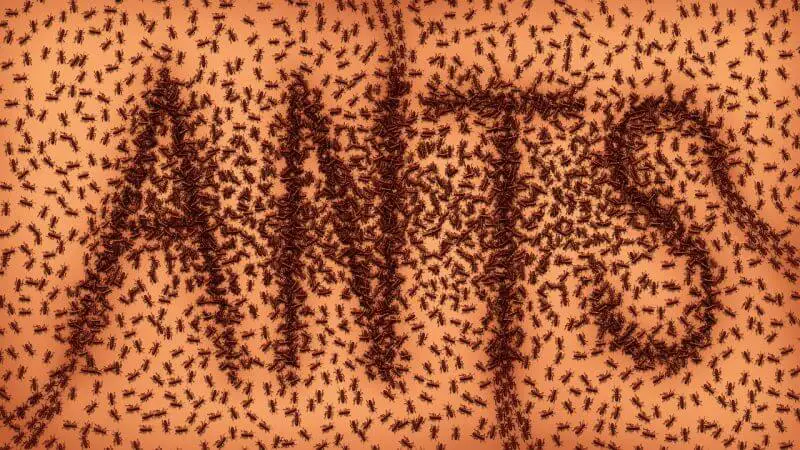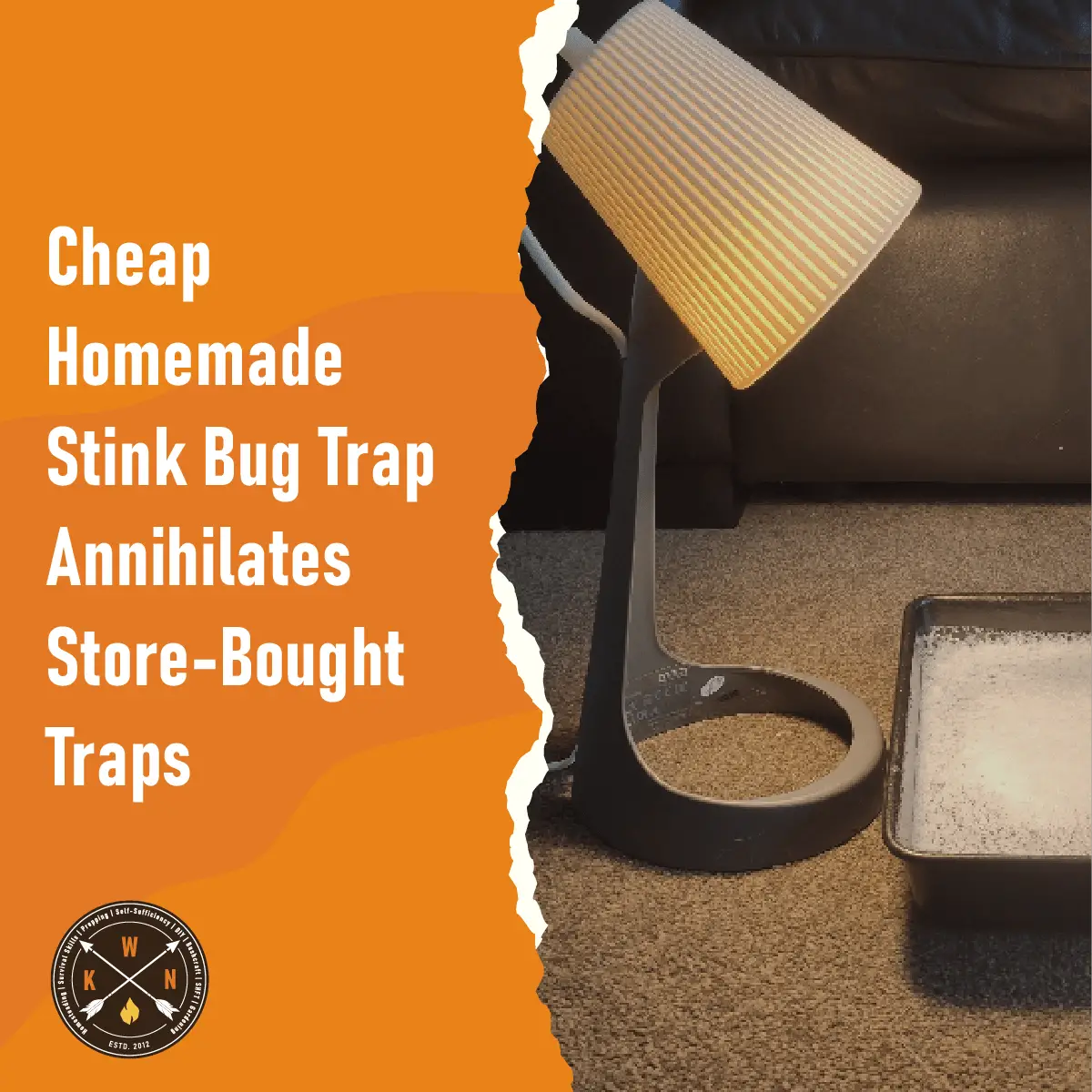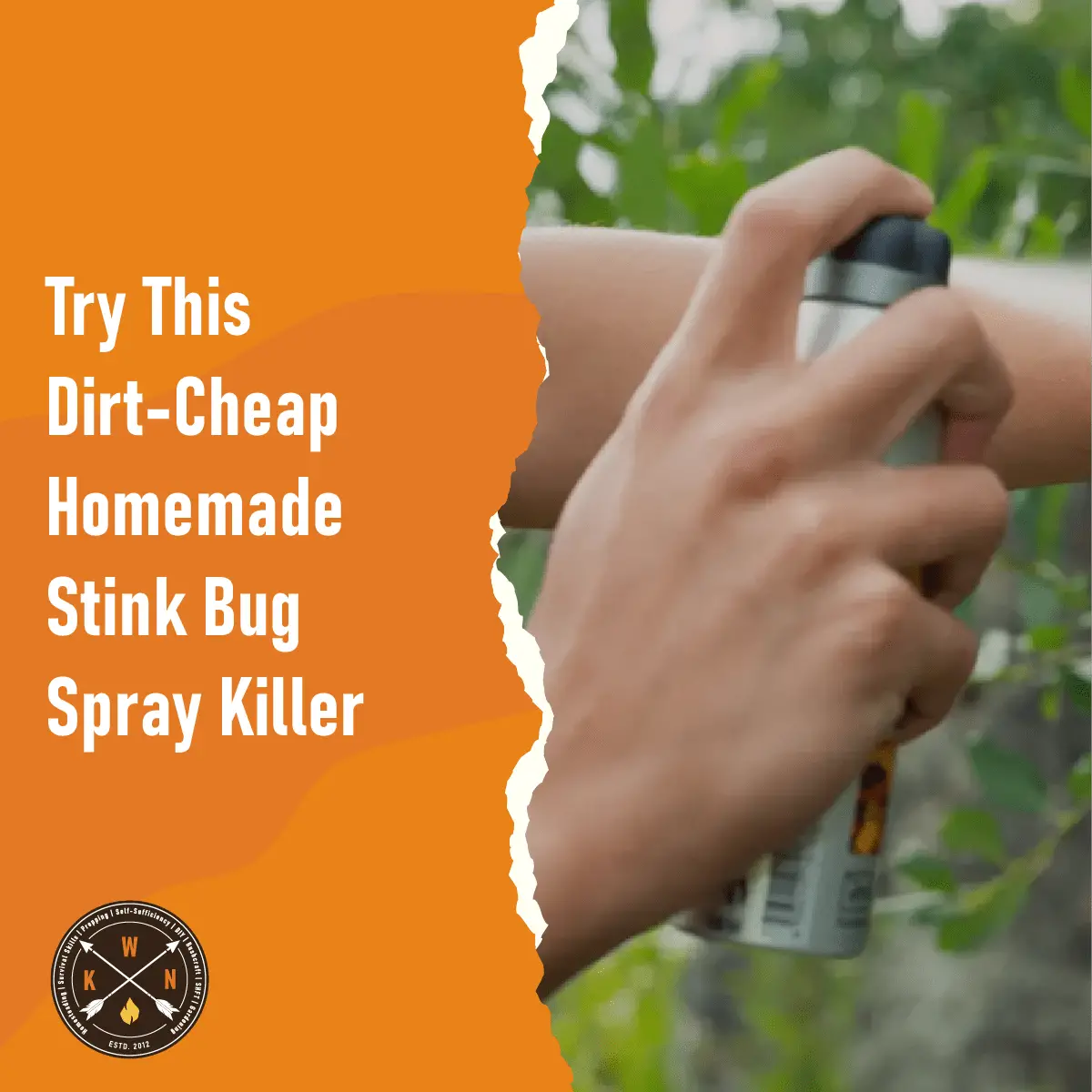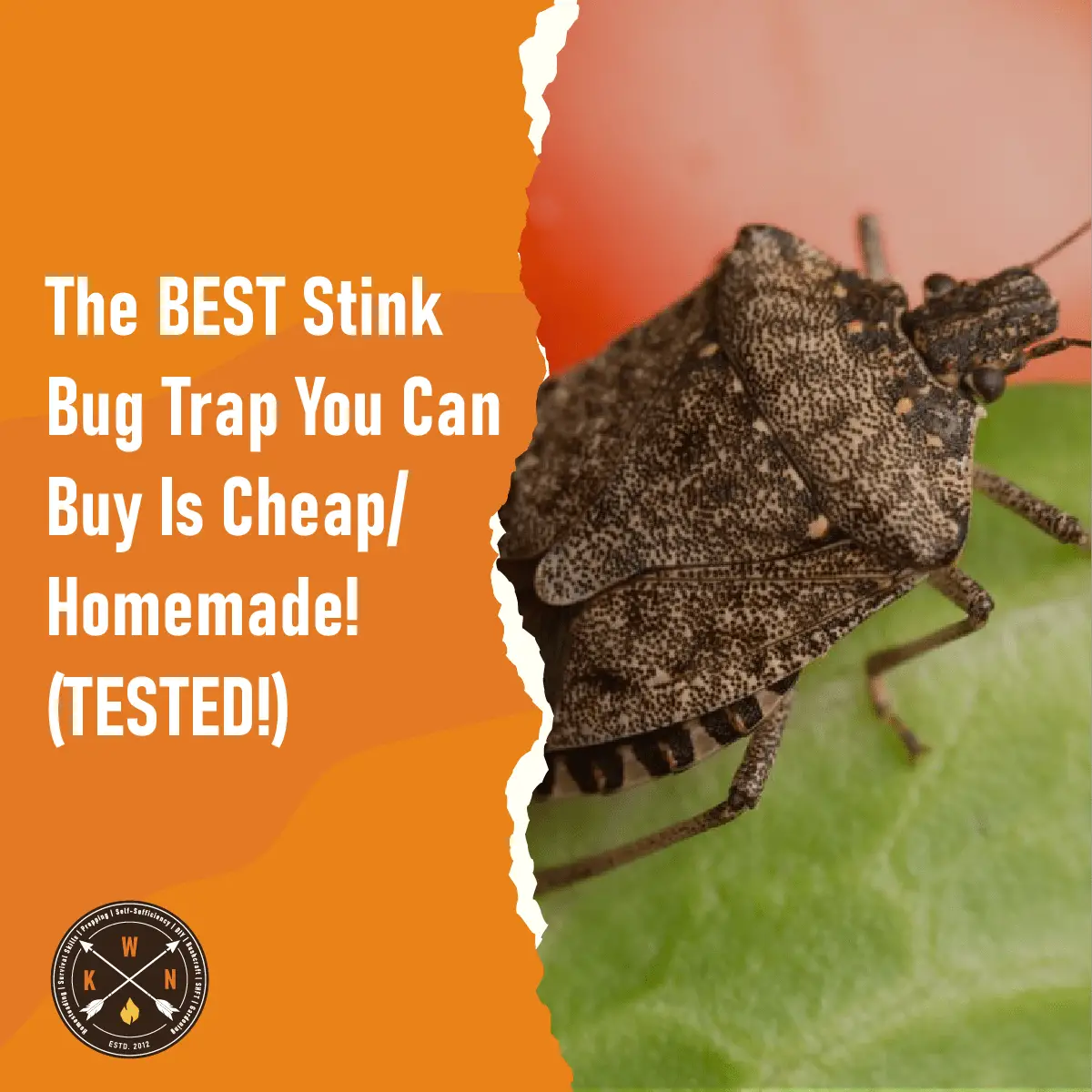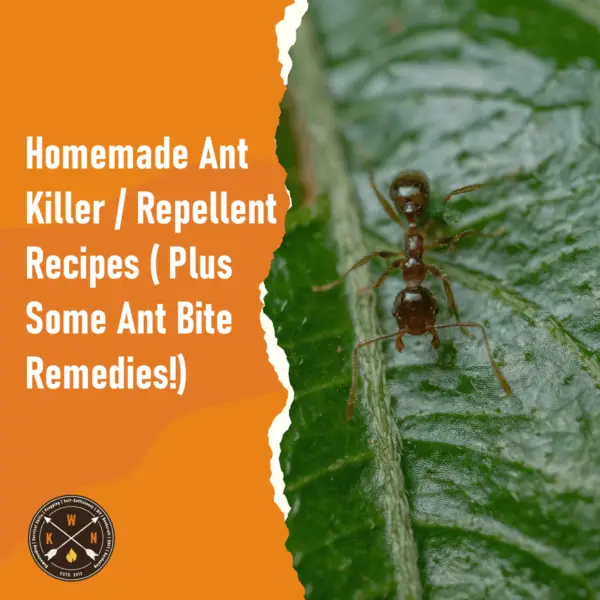
Ants. They bury, build and breed on epic scales and leaving a nest to go about its business for even so much as a week can see them seemingly plotting on taking over your household.
What’s more, the majority of us will have, at some time, been out and about, fishing, hunting or camping, and will have suffered a pretty nasty ant bite.
Here’s how you can take on this tiny but rather powerful little critter and how you can wage war and win through equally as powerful homemade ant killer recipes, remedies and tips.
Table of Contents
ToggleAnts… All about them and the havoc that they can cause
As a starting point, rather than jumping right in and eradicating ants with these homemade ant killers, it’s advisable that you at least have a little background about your adversary.
Ants live within colonies and they are interested in only two things: food and water. The only exception to this rule is where the weather outside may be cold, and in such an instance they will seek shelter and warmth.
Contrary to popular belief only a small amount of any one colony is made up of workers, accounting for approximately 10%, so if you see a big group of ants heading off outside and coming back in with their spoils then you can rest assured that the total colony is about 10x as large.
Do you really have an ant problem? Or could it be termites?
Before we get started on the ant killer tips, tricks and recipes let’s be sure that you really have an ant problem.
The differences between flying ants and terminates
Waists – Ants always have waists that are split into segments, whereas termites are about the same width all the way along their body, and do not feature a pinched in the waist.
Antennas – Both ants and termites have antennas, however, ants’ antenna are bent, whereas termites’ antennas are straight.
Wings – Both ants and termites have two sets of wings, however, ants have a second set of wings that are of a smaller size, whereas termite’s wings are all of the same sizes.
Preventing Ant Infestations
Before we move on to my kick-ass homemade ant killer recipes, here are a few essentials tips that can help with ant issues, or even forgo the need for going nuclear upon ants in the first place.
- Seal any cracks and crevices that may lead into the home where you suspect the ant may be entering from.
However, bear in mind that ants are particularly skilled at finding the very smallest of entrances to home and so you may struggle to close any and all possible entrances.
- Clean up possible entry points with detergent.
This will remove the chemical trail that ants leave behind them (which helps them in finding their way back to the colony). You can then finish this off by spraying any of my natural ant killer recipes within this guide around the entry points.
- Avoid leaving food scraps on the floor or on countertops. Ants send out scouts first – once they find food they bring in all their friends!
Some common foods that attract ants are:
- Maple syrup
- Honey
- Fruit juice
- Sugar
- Peanut Butter
- Honey
- French Fries
- Fruit
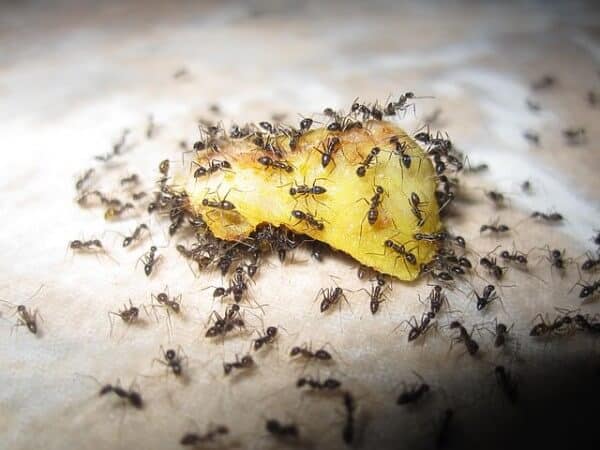 Ants attracted to fruit dropped on the floor (prevention is better than using ant killers)
Ants attracted to fruit dropped on the floor (prevention is better than using ant killers)
Before moving on to the homemade ant killer recipes, I want to point out one thing – ants are one of the world’s great recyclers and they rank as one of the most important species on the planet. They are vital to every ecosystem they exist in. Here’s an interesting soundbite: ants are the biggest consumers or protein on the planet!
When in the wild, away from your home, please leave ants in peace to go about their business. These ant killer recipes and tips are only to be used when ants are invading your home and causing a nuisance. Also, rather than just reaching for an ant killer, remember, prevention is better than the cure! Keep floors and work surfaces clean and avoid leaving any waste or spoilt food laying around.
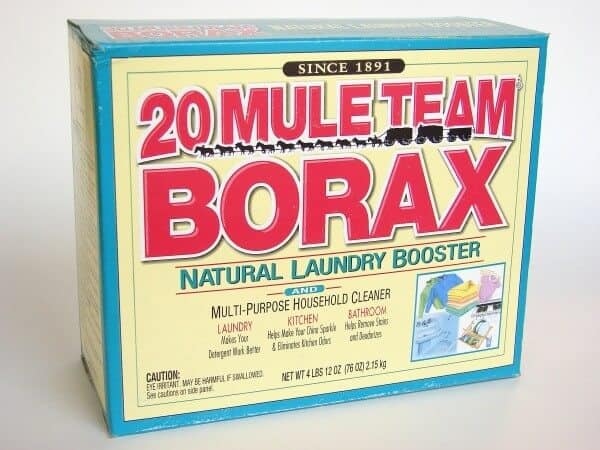 Borax is extremely effective at killing ants
Borax is extremely effective at killing ants
Homemade Ant killer Recipe: The Overnight Recipe
Ingredients that you’ll need
- Warm water
- Sugar
- Borax
Equipment that you’ll need
- Cotton Balls
- Mixing bowl
The Overnight Homemade Ant Killer Recipe: Step by step
This homemade ant killer recipe is probably the quickest and most effective one to use.
Step One – Measure 1 cup of warm water, then add 1/2 cup of sugar and 2 tablespoons of borax, then mix well.
Step Two – Now soak some cotton balls in the mixture and then place where you have seen ants.
That’s it, it’s cheap, simple and it works! The ants should be all gone within 24 hours.
Homemade Ant killer Recipe: A five-minute recipe
Ingredients that you’ll need
- 6 Tablespoon of Sugar
- 1 Cup of water
- 1 Tablespoon of boric acid
Equipment that you’ll need
- Cotton balls
- Containers with container lids (butter containers will be perfect)
A five minute Ant Killer recipe: Step by step
This homemade ant killer recipe is super quick and is suitable for when you’re not quite sure where the nest may be. Simply set up your container and wait for the win!
Step One – Dissolve the boric acid and sugar in water
Step Two – Soak your cotton balls in the solution
Step Three – Punch holes into the lid of the butter container
Step Four – Place your cotton balls within the container
Step Five – Place your containers wherever you spot an ant
Step Six – Sit back and relax!
These containers will attract ants, with them eventually taking traces of the boric acid back to the colony. After a few days you should notice a drastic reduction in ants.
 Dish soap/washing up liquid, mixed with water can be used to destroy an ant mount
Dish soap/washing up liquid, mixed with water can be used to destroy an ant mount
Homemade Ant killer Recipe: For the ant mound
This homemade ant killer recipe is ideal for when you know exactly where the ant mound is, and have access to it. This then treats the problem at the source and is probably the quickest method of all.
Ingredients that you’ll need
- Soapy water (One gallon of water with around a teaspoon of washing up liquid/dish soap)
Equipment that you’ll need
- A water jug to carry your mix
For the ant mound: Step by step
Step One – Mix up your soapy water
Step Two – Pour over the mound!
Step Three – Check back in around 24 hours, if there remains some ants that are still knocking about you should repeat the process
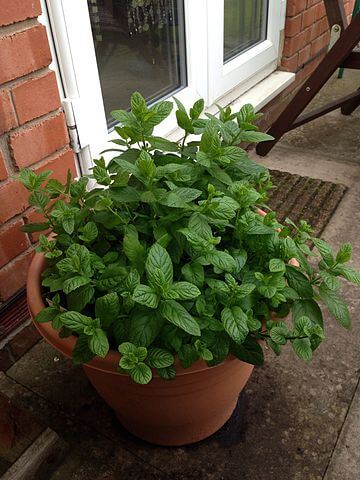 Mint leaves can be used to repel ants
Mint leaves can be used to repel ants
Homemade Ant Repellent Recipe: Repel Ants rather than killing them
OK, so most will want to eradicate all trace of their ant infestation by whatever means necessary, however, there may be some that would like a kinder option. So here it is, three of the most effective natural ant repellents mixed into one so that you know that your kindness won’t be your downfall.
Ingredients that you’ll need
- Mint plant(s) – you can also use peppermint oil too!
- Lemon juice
- Cinnamon
How to Repel Ants Naturally: Step by step
Step One – Place your mint plant or leaves where you’ve seen the most ants.
For the larger of properties, you’ll likely need a few of these. They act as a natural repellent that ant’s hate.
Step Two – Spray any ant entrances with lemon juice
Step Three – Grind up some cinnamon and place it around the home wherever you’ve seen ants lurking
This final step finishes off your ant itinerary perfectly and after a few days, you should notice that you have ant issues no longer!
Homemade Ant Killer Sprays: Quick mixes that can be popped into a spray bottle
The following homemade ant killer mixes are quick recipes that can be mixed up within a matter of minutes and poured into a spray bottle where they’ll be good to go.
- Vinegar
- Water (this is then a 50/50 mix with the vinegar)
- Cider Vinegar & Water (this should also be around a 50/50 mix with water)
- One of these essential oils: Peppermint, Lavender, Eucalyptus, Tea Tree Oil, Witch Hazel Extract (1 tablespoon) plus water–per spray bottle
- Liquid Dish Detergent & Water (around 1 good sized tablespoon of detergent, within a full spray bottle of water)
Been bitten? Here are 13 effective ant bite home remedies
So you’ve followed all of the tips and put together so much homemade ant killer that you could go into business. But you’ve still been bitten. Fear not, the following tips will help ease the inflammation and soothe the pain of the ant bite.
- Apply ice
Ice will help with swelling from the ant bite and act as a natural antihistamine.
- Rub in a little vinegar
Applying a little vinegar to the ant bite helps to prevent the formation of any harmful bacteria at the bite site.
- Apply toothpaste
Toothpaste will cool the skin and can numb any itching and prevent any swelling.
- Apply alcohol
Rubbing alcohol (which should be of relatively high alcohol content) into the wound can act as histamine and reduce any swelling that may have occurred.
- Apply or consume aspirin
Aspirin may be used in the more severe of circumstance and can help with any swelling around the ant bite (they’re anti-inflammatory). You can also try crushing an aspirin tablet and mixing it in water, and applying this directly to the bite to be left overnight.
- Apply teabags
Teabags are ideal for acting as a cold compress and will reduce any itching.
- Apply apple cider
Apple cider vinegar is a natural anti-inflammatory and anti-bacterial agent and applying this directly to the affected area can help stop the ant bites from becoming infected (as well as reducing any itching). It’s also particularly useful for skin that may have gotten to a stage of peeling due to scratching.
- Aloe Vera
Aloe Vera has plenty of great qualities and there’s not many bites, stings or rashes that it can’t help with. You can purchase aloe Vera gel, or you can source it yourself directly from the plant by cutting off and squeezing the leaves.
- Rub in salt
This point may seem little bizarre, however, the old adage of applying salt to the wound doesn’t apply in a negative sense here and can actually help keep infection away. So make up a salt paste with water and apply a thin coat to the affected skin. This will seal the ant bite site and prevent you from scratching and inflaming the area.
- Apply a baking soda paste
Making up a baking soda paste can redress the pH balance that gets disrupted when an ant bites. Simply add a ¼ teaspoon of baking soda to a large glass of water and apply thinly.
- Rub in tea tree oil
Tea tree oil is ideal for reducing the swelling and irritation around an ant bite, however, you need to dilute pure tea tree oil down before applying to the bite site.
- Rub in some Calamine lotion
If you happen to have some calamine handy then this can be used to soothe the ant bite and reduce irritation.
- Rub in a little Soap
Applying a little soap can help provide a protective coating to the ant bite, however, it really needs to be applied as soon as the bite is received.

